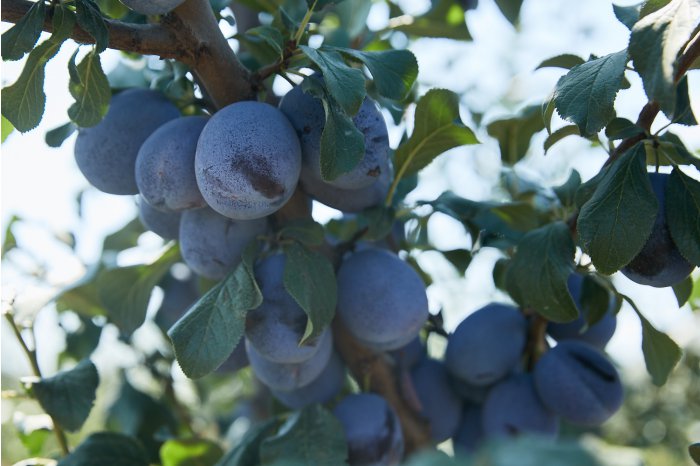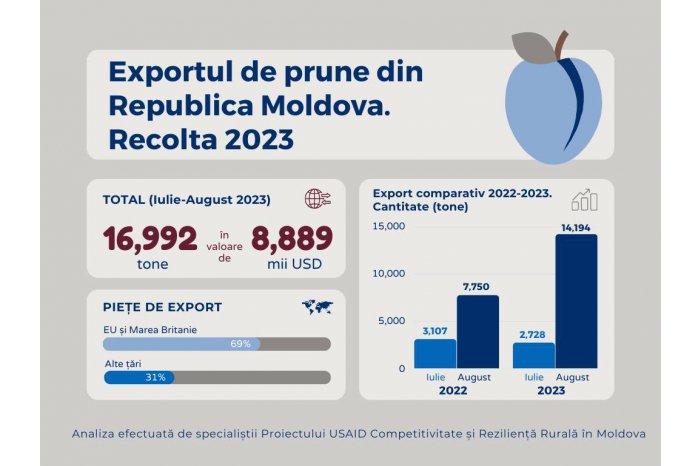Harvest of plums to be of 85,000 tons in Moldova in 2023
15:52 | 07.09.2023 Category: Economic
Chisinau, 7 September /MOLDPRES/ - The harvest of plums will be of 85,000 tons this year, according to estimations, marking a return to normal, after the last year harvest, hit by drought. As much as 70,000 tons out of this quantity are to be exported, according to the United States Agency for International Development (USAID).
„A strong beginning of the season is obvious, as in July-August, about 17,000 tons of plums have been already exported, as compared to about 10.9 thousand tons of plums exported on the same period of the 2022 year. About 11,340 tons of plums from the current year harvest have been already exported to EU markets, such as Germany, Austria and Croatia, as well as to the United Kingdom, in situation when, 6,442 tons were exported to the markets of EU and the UK in the same period of the year before,’’ USAID said.
The best exported varieties of plums from Moldova are Stanley, President and Cacanska Ran, known for their flavors and taste qualities. The investments in the quality of fruits, observance of the international standards, as well as the assistance of development partners stimulated the exports of plums produced in Moldova. Over 50 per cent of the deliveries went to EU in 2022 year alone.
To be competitive on the EU markets, Moldovan producers of plums implement international standards and certify the processes of production and post-harvest according to the GlobalG.A.P./GRASP and SMETA standards. At the same time, to back Moldova’s efforts to turn to account the new export markets, EU in last July extended by one year the measure of suspension of the taxes and the quotas of import applicable for table grapes, apples, sweet cherries, plums, tomatoes, garlic and grape juice, according to USAID.
USAID, through the Rural Competitiveness and Resilience Activity in Moldova Project, promotes the export of Moldovan agricultural products to western markets, speeds up the adoption of new varieties and advanced technologies of production and post-harvest and the implementation of the international standards, in order to enhance the competitiveness of the agricultural sector, contribute to the creation of jobs and extend the geography of exports.
Photo: USAID


